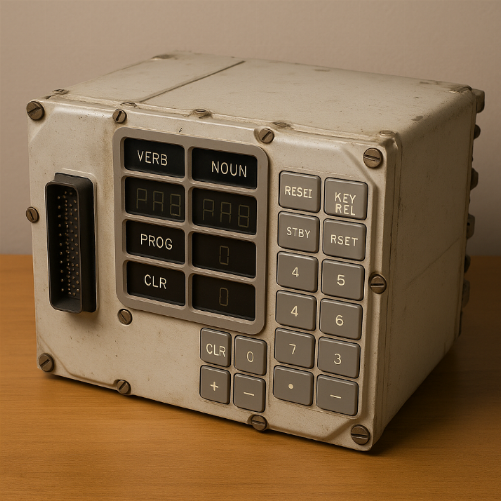Was the Apollo Computer Really Powerful Enough to Go to the Moon?
One of the most fascinating facts about the Apollo Moon landings is how little computing power was available at the time. The Apollo missions weren’t powered by cutting-edge supercomputers—they were guided by a small, custom-built device called the Apollo Guidance Computer (AGC).
Compared to today's technology, the AGC was astonishingly simple. It had only 64 kilobytes of memory and ran at about 0.043 MHz. For perspective, even a basic digital wristwatch today has more processing power, and your smartphone? It’s millions of times more powerful.
Yet, despite its simplicity, the AGC was absolutely capable of handling the complex tasks required to land humans on the Moon and bring them back safely.
Designed for Space, Not Power
The Apollo Guidance Computer was built for one purpose: reliability in space. It wasn’t about having fast performance; it was about executing real-time flight calculations with extreme precision, in a harsh environment, with no room for error.
The AGC was used in both the Command Module and the Lunar Module. It could control navigation, trajectory corrections, engine burns, and landing sequences. It used a unique user interface called the DSKY (Display and Keyboard), which allowed astronauts to enter numeric commands using “verbs” and “nouns.”
Cutting-Edge for Its Time
At the time, the AGC was revolutionary. It was one of the first computers to use integrated circuits, which made it compact and lightweight—two essential features for spaceflight. Its software was written in a custom assembly language and stored in core rope memory, a type of read-only memory woven by hand (literally woven by women, many of whom were textile workers turned NASA technicians).
The AGC could multitask, detect system overloads, and even recover from errors mid-mission—as it did famously during Apollo 11, when a computer alarm was triggered just before the lunar landing. Thanks to its design and NASA’s training, the astronauts and mission control were able to proceed safely.
So Was It “Good Enough”?
Without question—yes. The Apollo Guidance Computer was more than good enough. It was engineered to do exactly what was needed: guide astronauts across 238,000 miles of space, land them on the Moon, and bring them home. That’s not just good enough—it’s historic.
It’s a perfect reminder that technology doesn’t have to be powerful in a general sense to be powerful in purpose. What mattered was precision, reliability, and robustness—and in those areas, the AGC was far ahead of its time.
